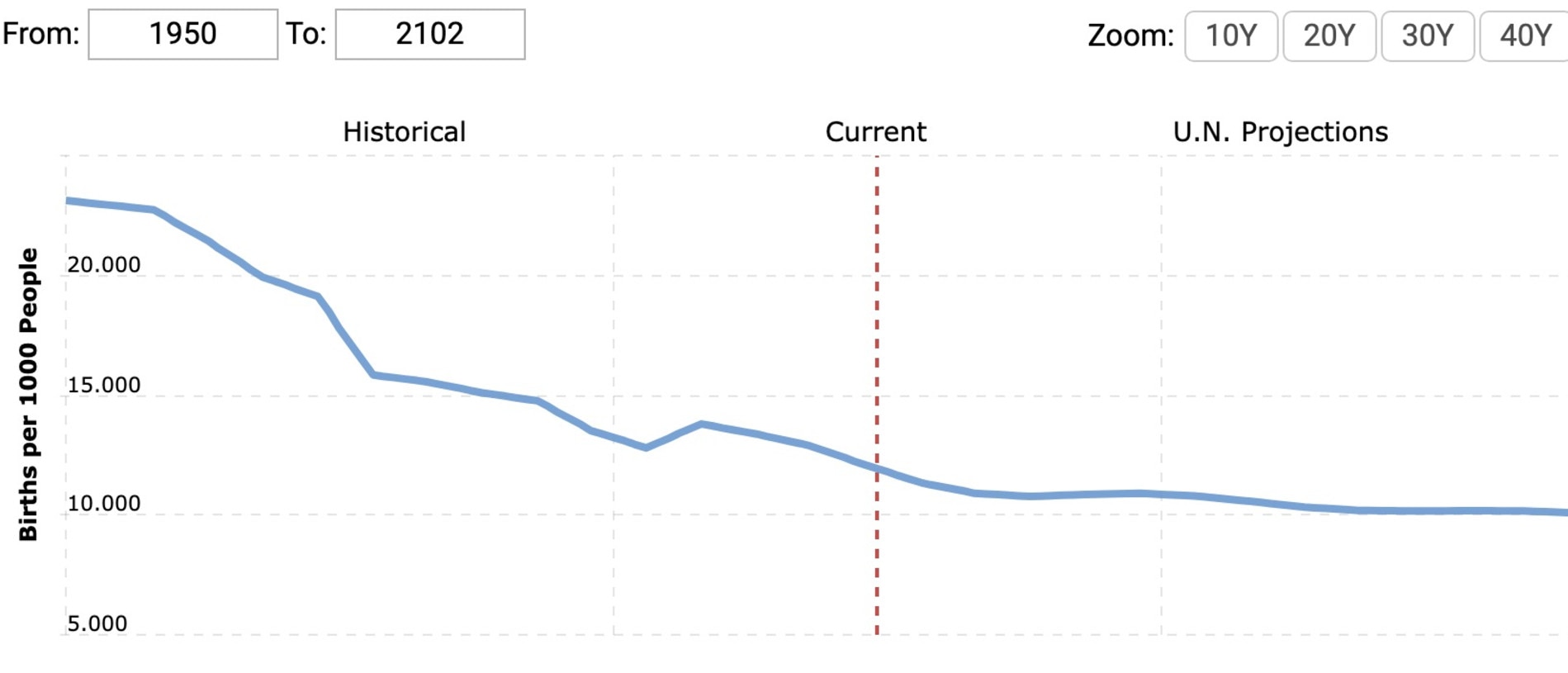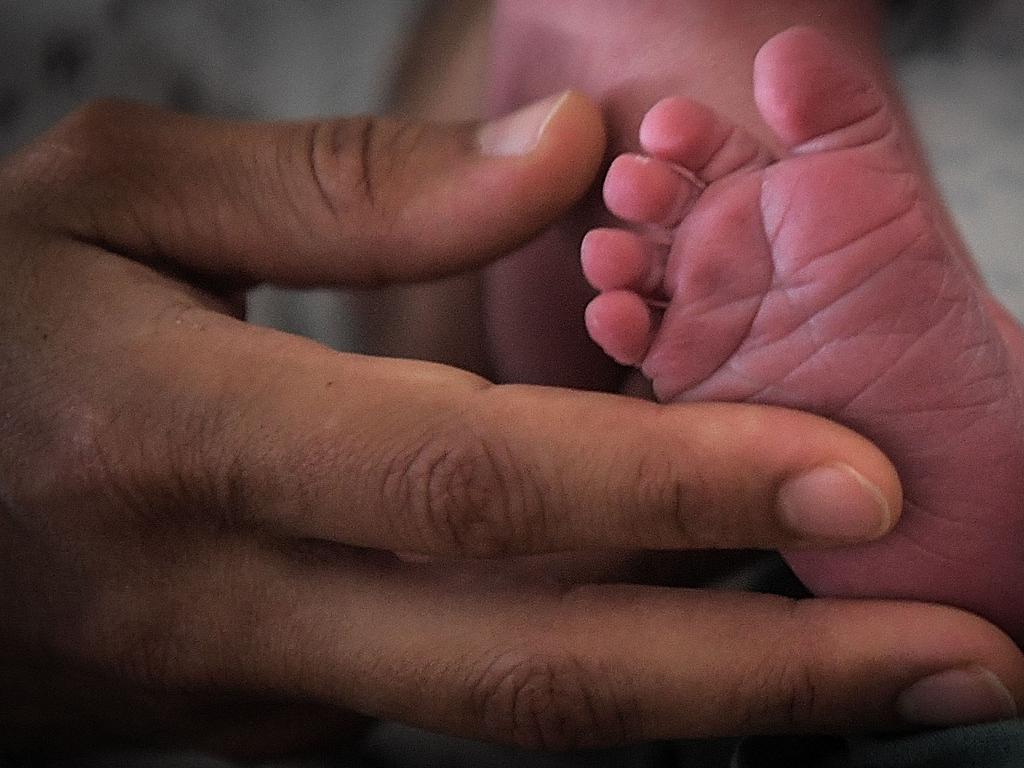‘Really low for Australian history’: Our fertility rate is dropping steadily amid cost of living crisis
A startling figure has shown we’re moving backwards, prompting concerns from analysts who say there isn’t enough being done to support young Aussies.
Australia’s birthrates are at startling lows two decades on from the Liberal Party’s baby bonus, prompting concerns from demographers who say our nation must prepare for population decline.
The current birthrate for Australia in 2024 is 11.939 births per 1000 people, a 1.21 per cent decline from 2023. Fertility figures have dropped by about 1.3 per cent year on year since 2020.
Former Treasurer Peter Costello famously told families they should be aiming to have three kids, one for mum, one for dad and “one for the country” to tackle the ageing population forecast back in 2004.
There are a wide range of factors contributing to our ageing population – but if you ask childless couples under 30, chances are they’ll give you the same answer.
The rising cost of living crisis is playing a significant role in why young Australians are choosing not to have kids, at least for the time being.
The real tragedy is that there are people out there who would love to have kids, but are simply not financially capable of supporting one, let alone three children under the current climate.
A report by the University of Canberra found that the cost of raising two children would range from $474,000 to $1,097,000 throughout their childhood.
And with new estimates revealing you need to earn somewhere around $300,000 to comfortably service a mortgage in Sydney, it’s not hard to see why our younger generation is trending towards childlessness.
Those who are committed to starting a family are now fleeing major cities, prompting fears inner suburbs will become little more than retirement villages for a generation that was lucky enough to hoard real estate.
There are others who are taking a leaf out of Seth Rogen’s book and have written off the idea completely, with the actor proudly advocating for a child-free life and saying he and his wife “get to do whatever we want”.

ABS demography director, Phil Browning, says it’s becoming increasingly unlikely that Australia will replace the current generation.
“In terms of where fertility is right now, it’s down – it’s really low for Australian history,” he told the ABC.
Amanda Davies, a demographer at the University of Western Australia, suggested a shift in policy could help drive up the “concerning” phenomenon.
“There’s certainly concern in the community that Australians aren’t having more children, and what that will mean for Australia and how it’s going to shape (the nation),” Dr Davies said.
“There certainly is concern about that, and how and what policies can be effective to assist Australians to have more children.”
She agreed that the children from the baby bonus era are facing far harder struggles than previous generations when it comes to thinking about a family.
“These Costello kids are making their plans about a family now,” Dr Davies continued. “They’re coming out of university with debt, they’re coming out of TAFE, with debt, and then they’re trying to put houses or purchase a house, and secure ongoing employment before they have a child.
“That is then directly impacting people’s decisions to have children at a certain age, so they’re pushing it later that you see the stats, and they’re also having fewer children.”
And we’re not alone.
Countries all around the developed world are experiencing the same issue.
Japan posted a total population decline of nearly 800,000 in the last financial year, with figures showing deaths hit a record high of more than 1.56 million while births hit a record low 771,000.
Even a record 10 per cent increase in foreign residents to 2.99 million couldn’t halt the 14th straight year of declining population, which reached 122.42 million in 2022.


According to United Nations projections, many countries are expected to see population declines over the next three decades due to a combination of declining fertility rates and emigration.
In January, French President Emmanuel Macron's laid out plans to revive France's sluggish birthrate, promising better parental leave and to combat infertility, which he called “the taboo of the century”.
In 2023, France registered 678,000 births, a drop of 6.6 per cent from the previous year, the lowest annual rate since World War II.
Migration will continue to play a major part in how Australia’s population transforms over the next decade. Record intake over the past 12 months has already begun to wreak havoc on the housing market, but some say there are benefits to increasing immigration when viewed strictly through a numbers lens.
Peter McDonald, Professor of Demography at the University of Melbourne, said we would definitely see a decline by 2034 if migration were to cease.
“With no migration, Australia’s population would begin to fall in about 10 years,” Dr McDonald said.
“Many countries around the world are already experiencing population decline and most are not happy about that situation.
“As long as fertility remains at 1.6 and migration continues as it has over the past decade, Australia does not have a demographic-economic problem.”
Without migrants, the ABS claims Australia’s population would fall to 23.9 million by 2071, roughly two million less than current levels.






